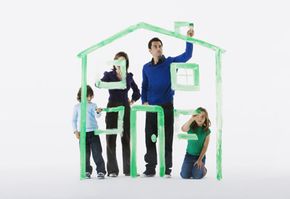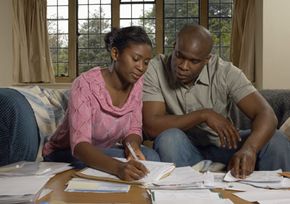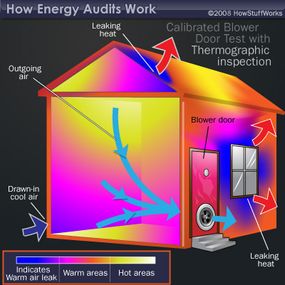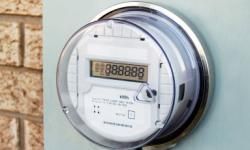Before starting a home energy audit yourself, it's helpful to know what you're dealing with. Gather your energy bills from the last couple of years and compare them month-by-month to look for trends. Spikes in energy usage during specific times of the year can offer clues about your consumption.
Here's what to do.
Find the air leaks: Walk around your house and feel for air leaks in these places:
- Gaps in the baseboard and where the walls and ceiling meet
- Window and door frames, as well as their weather stripping and caulking
- Mail slots and doggie doors
- Fireplace dampers
- Window-mounted air conditioners
- Electrical outlets and switch plates
- Pipes
- Areas where building materials come together (such as in corners, around chimneys and along the foundation of your home)
If you're having trouble finding leaks, close any doors, windows and fireplace flues. Turn off combustion appliances, such as the water heater and furnace. Then turn on exhaust fans to pull air from the outside and make leaks more obvious. Either wet your hand and wave it in front of suspected areas (the draft should feel cool on your hand) or use the smoke from a stick of incense to see where the air moves.
Investigate the insulation:Check the thickness of your attic insulation to make sure it meets current recommendations. There also should be a vapor barrier under the insulation. The insulation should cover holes in ductwork, pipes and chimneys.
Once you've finished in the attic, head downstairs and check the basement. Unheated basements should also have insulation under the floor of the living area. Heated basements should have it in the foundation walls, as well as around the water heater, hot water pipes and furnace ducts.
Also check crawl spaces, ceilings and outside walls to make sure they're well insulated. To know whether there's insulation in your walls, turn off circuit breakers so that the electricity is off, remove the cover plate from the outlet and push a long, thin wooden stick into the wall (or drill a hole into the back of a closet). If you meet resistance, it means there's some insulation.
Check out heating and cooling equipment: Your furnace and air conditioner can be big drains on your home energy use. If your units are more than 15 years old, consider replacing them with more energy-efficient systems.
Have your heating and cooling systems checked by a professional each year. Replace the furnace filters as often as the manufacturer recommends (usually about once every month or two, especially during the winter when it's running regularly). If you have central air, vacuum the coils if they're dirty.
Look into the lighting: Using the wrong type of lighting can put a strain on your energy bill. If you have 100 watt bulbs, you may be able to get away with 60 or 75 watts. Or switch to compact fluorescent lightbulbs (CFLs), which use about 75 percent less energy than standard bulbs. Using more energy-efficient lighting may even get you a rebate from your utility company. You can also save energy by installing dimmer switches and sensors that flip off lights when no one is around.
Hunt for energy losers: Refrigerators, dishwashers and other appliances can sap energy if they're not properly set up and maintained. To see how much energy your appliances are using, plug in a Kill-A-Watt Electric Usage Monitor, which will give you details on energy use and show you how much extra you're spending. You may be able to make slight adjustments -- for example, adjusting the temperature on your refrigerator -- to improve your numbers. Also unplug any appliances (like DVD players or computers) when they're not in use.






